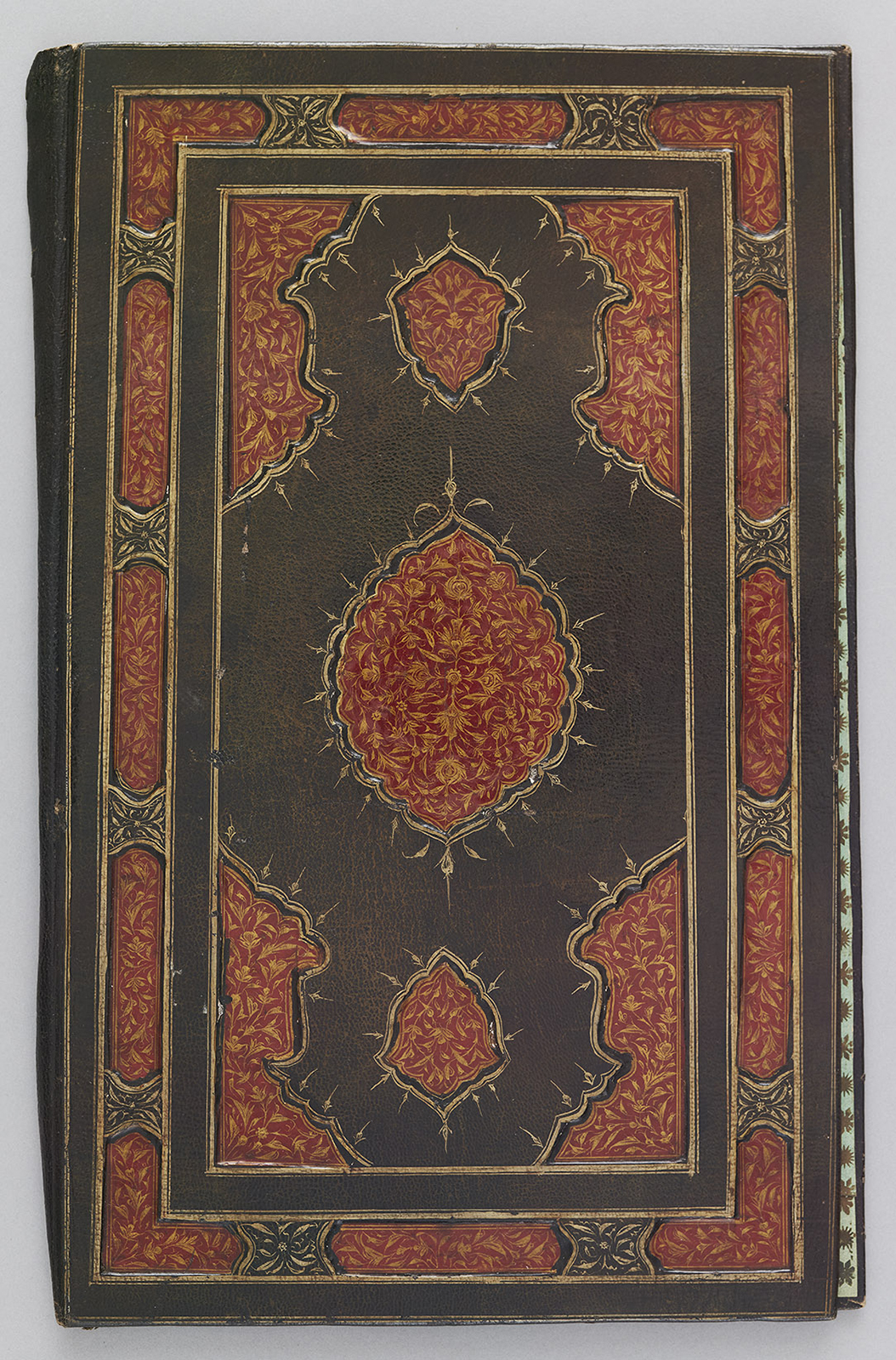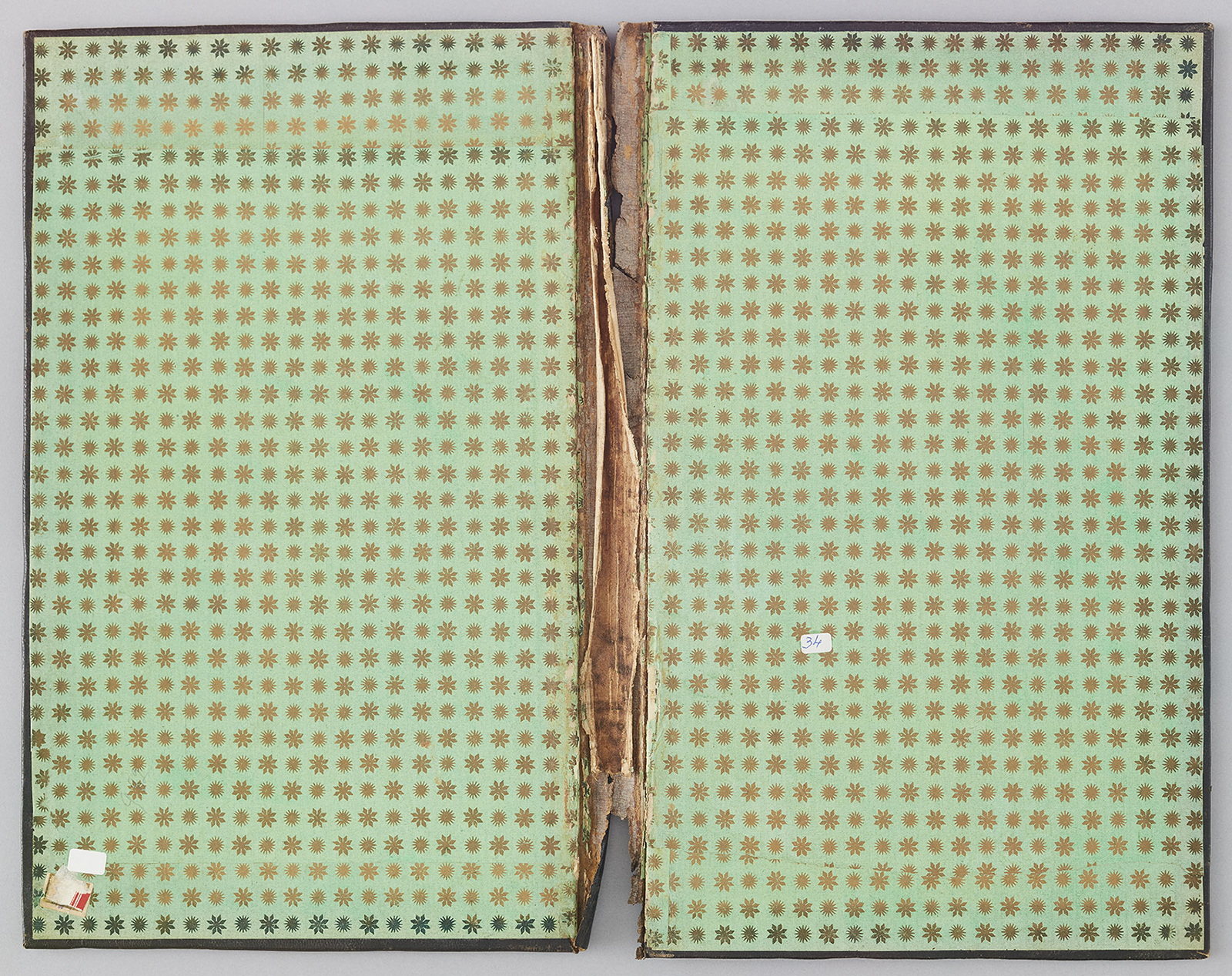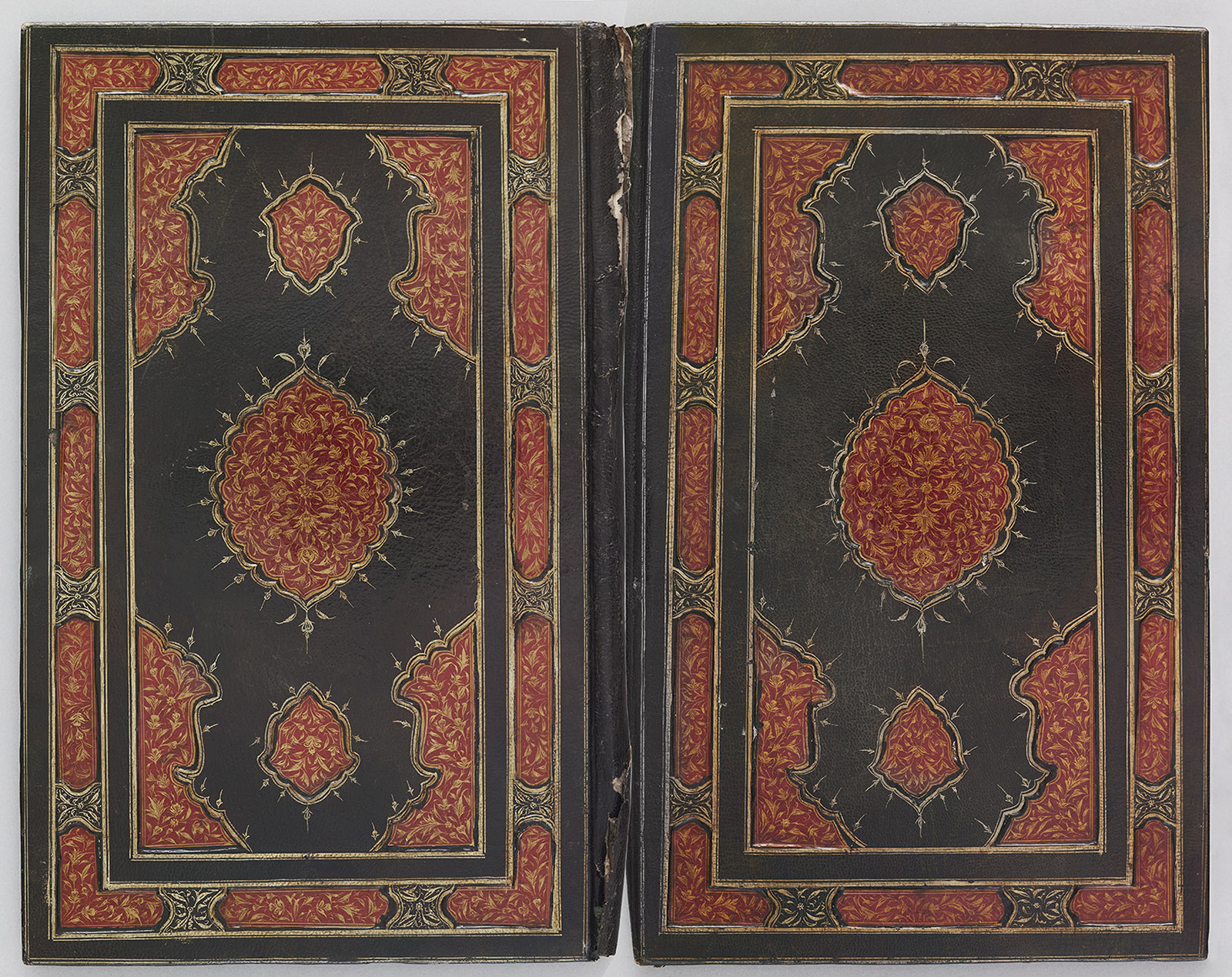Click on the image to zoom
Binding, outer covers and doublures
- Accession Number:AKM1005
- Place:Iran
- Dimensions:39.4 x 23.5 cm
- Date:1700-50
- Materials and Technique:Leather, pasteboard, gold, paper
Durable yet easily decorated, leather presented an ideal material for protecting Islamic manuscripts. Some particularly fine bindings executed in the 15th century even featured different designs on the upper and lower covers.[1] Delicate leather filigree was often reserved for inner covers (doublures), where it would be less susceptible to damage.
Further Reading
Produced during the Zand (1751–94) or Afsharid (1736–96) periods in Iran, this binding is the work of a master binder. The outer covers of black-coloured leather are decorated with a recessed medallion with pendants, cornerpieces, and cartouches in the border, all made of red leather. The red leather motifs have painted gold designs of branches, leaves, and flowers applied with a brush. The doublures are faced with green paper patterned with gold rosettes.
- Zeren Tanındı
Notes
[1] Oktay Aslanapa, “The Art of Bookbinding,” figs. 38, 48, 51; Julian Raby and Zeren Tanındı, Turkish Book Binding in the 15th Century. The Foundation of an Ottoman Court Style, 106–25, cat. 1–4.
References
Aslanapa, Oktay. “The Art of Bookbinding.” The Arts of the Book in Central Asia, 14th–16th Centuries, ed. Basil Gray. Paris and London: UNESCO/Serindia Publications, 1979, 59–92. ISBN: 9780877731658
Raby, Julian and Zeren Tanındı. Turkish Book Binding in the 15th Century. The Foundation of an Ottoman Court Style. London: Azimuth editions on behalf of l'Association Internationale de Bibliophilie, 1993. ISBN: 9781898592013
Note: This online resource is reviewed and updated on an ongoing basis. We are committed to improving this information and will revise and update knowledge about this object as it becomes available.








